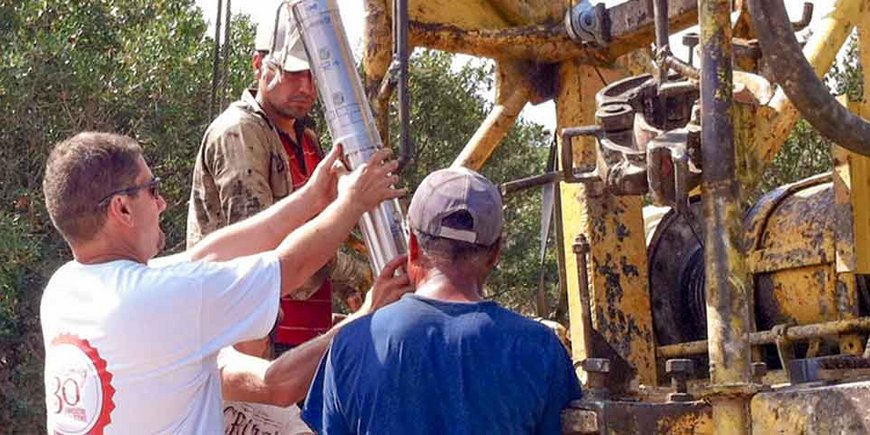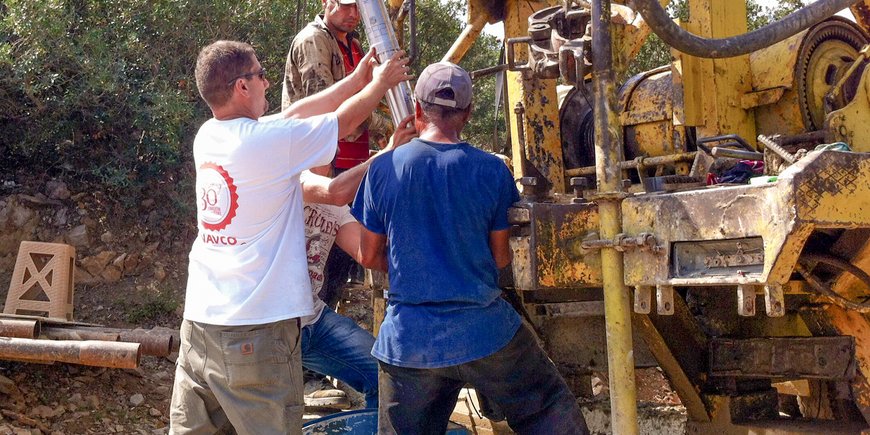Earthquakes typically last only a few seconds, although sometimes the shifts in the subsurface occur in slow motion. Understanding these ‘slow quakes’, known as ‘slow slip events’, and their interplay with the short - sometimes violent - tremors is critically important to define the seismic hazard and subsequent risk. An international group led by Patricia Martínez-Garzón, Junior Group Leader at the GFZ German Research Center for Geosciences, has now published a study in the journal "Seismological Research Letters" in which they investigate this interplay of different seismic events near the metropolis of Istanbul with its millions of inhabitants.
A suspicious calm in the ‘seismic gap’
The Armutlu Peninsula is currently the most seismically active area directly south of the densely populated Istanbul megacity. The region is part of the North Anatolian Fault, separating Eurasia from the Anatolian plate. This fault is an active tectonic plate boundary known to generate destructive earthquakes causing large numbers of casualties. The last such major earthquake occurred in 1999 near Izmit resulting in almost 20,000 fatalities. A portion of the fault, running between Istanbul and Armutlu, is currently identified as a “seismic gap” because there is a suspicious calm there, so to speak. The region is therefore considered overdue to produce a major earthquake.
Observation of slow quakes
In this region, slow earthquakes could be first identified in 2019 thanks to special borehole strainmeter instruments deployed by researchers from the GFZ German Research Centre for Geosciences, in collaboration with the Turkish Disaster and Emergency Management Presidency (AFAD) and the UNAVCO institute from US. To further study the interaction between slow slip events and “regular” earthquakes in the region, a dense temporary seismic network “SMARTnet” was deployed in the Armutlu Peninsula, as part of the GONAF Plate Boundary Observatory.
Framing a regular MW 4.6 earthquake in December 2018, another 30-day lasting slow slip event was now recorded, activating the shallower portion of the same small fault. After that, the fault continued to be seismically active during an entire year, with more than 1000 earthquakes located on the same fault section.
Higher seismicity rates after larger earthquake
The recent study in "Seismological Research Letters" reports on these observations and discusses that the larger seismicity rates during the year after the MW 4.6 event are promoted by the occurrence of the slow slip event, as well as the re-distribution of stresses after the main rupture. “The strainmeters near the active fault allowed to identify the slow slip signal that presumably occurred at shallow depth level and that released an amount of energy equivalent to that of a magnitude 5.5 earthquake, but distributed over weeks, not seconds,” says Dr. Martínez-Garzón, lead-author of the study.
Exact role of slow quakes still to be clarified
How the slow slip event could have affected the state of stress along nearby faults remains yet to be investigated in detail. Prof. Marco Bohnhoff, head of the GONAF observatory and a co-author of the study states: “How the slow and fast earthquakes interact remains to be understood in detail. In any case, our results will allow to better quantify the regional seismic risk, in particular for the 15-million population center of Istanbul in the light of the pending big one.”
Funding: Dr. Martínez-Garzón is funded by the Helmholtz Young Investigators Group SAIDAN: Seismic and aseismic deformation in the brittle crust. GONAF is part of the GFZ Plate Boundary Observatory initiative and was co-funded by German, Turkish and US agencies as well as from the International Continental scientific Drilling Programme ICDP that is based at GFZ Potsdam. The temporary seismic network SMARTnet was also funded by GFZ Travel Expedition Funds.
Original publication: Martínez-Garzón, P., V. Durand, S. Bentz, G. Kwiatek, G. Dresen, T. Turkmen, M. Nurlu, and M. Bohnhoff (2021). Near-Fault Monitoring Reveals Combined Seismic and Slow Activation of a Fault Branch within the Istanbul–Marmara Seismic Gap in Northwest Turkey, Seismol. Res. Lett. XX, 1–14, DOI: 10.1785/0220210047
Scientific contact:
Dr. Patricia Martínez-Garzón
Group Leader Section Geomechanics and Scientific Drilling
Helmholtz Centre Potsdam
GFZ German Research Centre for Geosciences
Telegrafenberg
14473 Potsdam
Phone: +49 331 288-28833
Email: patricia.martinez.garzon@gfz-potsdam.de
Prof. Dr. Marco Bohnhoff
Head Section Geomechanics and Scientific Drilling
Helmholtz Centre Potsdam
GFZ German Research Centre for Geosciences
Telegrafenberg
14473 Potsdam
Phone: +49 331 288-1327
Email: marco.bohnhoff@gfz-potsdam.de
Media contact:
Josef Zens
Head of Public & Media Relations
Helmholtz Centre Potsdam
GFZ German Research Centre for Geosciences
Telegrafenberg
14473 Potsdam
Phone: +49 331 288 1040
Email: josef.zens@gfz-potsdam.de









![[Translate to English:] Torsten Sachs in front of a climate station on a field](/fileadmin/_processed_/3/9/csm__TorstenSachs_bearbeitet_GS_4a1365ef84.jpeg)

![[Translate to English:] left image flood at the Ahrtal: image from above, several houses are flooded; left image:: Heidi Kreibich;](/fileadmin/_processed_/4/4/csm_Bild2_9af0130e9f.png)



![[Translate to English:] Start der Vega Rakete](/fileadmin/_processed_/6/4/csm_20231201-kachel_Vega-VV23-launch_ESA-CNES-Arianespace_706716b68c.jpeg)









![[Translate to English:] Poster exhibition at the Brandenburg Hydrogen Day at the GFZ, some participants in the foreground](/fileadmin/_processed_/6/5/csm_Erster_Brandenburgischer_Wasserstofftag_GFZ_402fcec95e.jpeg)
![[Translate to English:] Group picture of the participants](/fileadmin/_processed_/9/4/csm_20231108_CAWa-Workshop-Tashkent_Gruppenbild_99ea779d8a.jpeg)

![[Translate to English:] [Translate to English:] Hörsaal](/fileadmin/_processed_/e/6/csm_H%C3%B6rsal_e21ac645fb.jpeg)


![[Translate to English:] The Delegations in the Historic Library on the Telegrafenberg. In the back there are from left to right, the Dutch Ambassador for Germany, Ronald van Roeden, the Dutch Minister for Education, Culture and Science, Robbert Dijkgraaf and the scientific director of the GFZ, Susanne Buiter.](/fileadmin/_processed_/d/b/csm_Kachel-2_9eba4b4212.jpeg)

